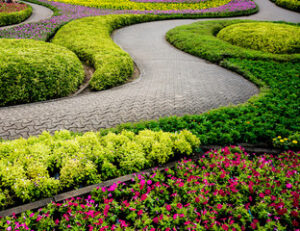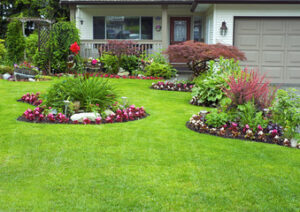Sprinkler Repair Harrisburg PA is crucial for maintaining your lawn’s value and health. It is often best left to professionals who can inspect your system and identify problems before they become serious.
Some common issues include patchy areas of your lawn despite the system being on, puddles or water pooling in spots, or erratic spray patterns.

If you’ve ever turned on your sprinkler system only to be disappointed by a sputtering dribble rather than a gushing geyser, you understand the frustration of uneven lawn coverage. Identifying the root cause of these problems and implementing precise sprinkler repair helps restore your landscape to lush, thriving health. Poor water distribution often results from misaligned sprinkler heads and/or low water pressure. This is an issue that can be addressed with simple troubleshooting steps, though complex issues like deep underground leaks or systemic design flaws require the help of a professional.
If your system is experiencing poor water pressure, start by examining the sprinkler valves. Each sprinkler head is connected to a valve with a diaphragm seal that opens and closes when the system activates. If the valve doesn’t activate when it should, the problem could be a defective diaphragm, blockage inside the head or in the valve itself. Checking the valves regularly and replacing damaged ones can help improve sprinkler efficiency and reduce water wastage.
In addition to checking your sprinkler valves, you can also look for signs of clogged nozzles in the sprinkler heads themselves. If a nozzle is clogged, removing and cleaning it can often resolve the issue. For more serious clogs, it may be necessary to replace the faulty head.
Other common issues that can impact sprinkler performance include faulty settings on the controller, changes in municipal water pressure and problems with the irrigation pipe line itself. Checking your municipal water pressure at different times of the day can be helpful, as fluctuations might indicate a higher demand for water from other sources in your neighborhood.
If your sprinklers aren’t working properly, shut off the water supply to your system and inspect the irrigation pipe lines for damage or a leak. Leaks are one of the most common and expensive problems in sprinkler systems, so it’s important to identify and repair them promptly to avoid water wastage and high utility bills. When identifying issues with your sprinkler system, it’s essential to work carefully and to use proper tools to prevent any accidental damage.
Parched Grass
After a long, hot summer with little to no rain, most lawns have started turning brown. This is not only due to the heat and lack of water, but also because many lawns are under stress from nutrient deprivation. Uneven water distribution is a common cause of grass turning brown and dry, so it’s important to get your sprinkler system working properly to avoid this problem.
In some cases, the dry spots may be caused by pests or disease that is affecting the grass. The damage to the grass can leave it with a thin layer of dead leaves and stems that makes it difficult for nutrients or water to penetrate the soil, leading to drought conditions. In this case, you’ll need to treat the lawn with pest control products to help the grass recover and grow back healthy.
Other reasons for dry grass patches include overspraying on sidewalks or driveways and clogged sprinkler heads. The nozzles of the sprinkler heads can become clogged with dirt, grass clippings and other debris, so it is crucial to keep these clean and clear as often as possible. If your nozzles are clogged, turn off the sprinklers and use a garden hose to gently rinse out each head.
Sprinkler heads can also be installed at the wrong height, which leads to overspraying and uneven plant growth. Sprinklers that were installed too high can also be a tripping hazard and cause damage to the sprinkler system itself. In either case, readjusting the height of the sprinkler heads to their correct position will help your grass look healthier and greener.
Thatch Build-Up
An organic layer of old grass clippings, stems and other debris that builds up between the soil surface and grass is called thatch. While a thin layer of thatch is healthy for the lawn and can actually make it more resilient to wear and tear, excessive thatch prevents water and air from reaching the soil, which can lead to a number of problems. This is why it’s important to maintain good lawn care practices, including regular mowing and frequent dethatching.
Clogged Sprinkler Heads
When sprinkler heads fail to rise or spray, it’s usually a sign of a blockage. This can be caused by dirt, grass clippings or debris from mowing and landscaping. It may also be due to a cracking or broken head, which you’ll want to replace.
You should be able to tell by looking at the sprinkler head whether it has a clog, as this will likely be visible. If not, you can turn off your irrigation system and use a wire or paperclip to unclog the hole in the sprinkler head. Be sure to turn the water back on after you’re done.
Another common problem with sprinkler systems is a faulty valve. This is typically located under a metal or plastic cap. The valve is responsible for controlling the water flow to each sprinkler head. If the valve becomes clogged or damaged, it can’t be opened or closed, and your yard will suffer from an uneven distribution of water.
If you’re not a do-it-yourselfer, you can call a sprinkler repair specialist to troubleshoot and fix your problems. Or, you can learn some tips for preventing and fixing sprinkler issues in our Sprinkler System Maintenance Guide.
Keeping your sprinkler system in good shape will help you avoid costly repairs and ensure that the entire yard gets evenly watered. So be sure to check and test your sprinkler system before the summer heat arrives!
With a few simple tips, you can keep your sprinklers running smoothly throughout the season. If you have any other questions about your irrigation system, don’t hesitate to contact us at Andy’s Sprinkler, Drainage & Lighting Services! We’re always happy to answer your questions and provide expert advice. Contact us today to schedule an appointment! We offer a variety of irrigation services, from sprinkler installation to drip system repair. We serve customers in the Denver Metro area, including Denver, Littleton, Centennial and surrounding areas. We are licensed and insured, with over 25 years of experience in residential and commercial sprinkler repair and installations. Our services are fast, affordable and guaranteed!
Pressure Issues
If you notice areas of your lawn aren’t receiving adequate water coverage or if there is a noticeable difference in spray patterns, then your sprinkler system may be experiencing low pressure. A plethora of issues can lead to this problem, but addressing them promptly can ensure your lawn receives the proper amounts of water and prevents damage to the irrigation pipes.
Simple low-pressure issues can often be resolved by checking to make sure the sprinkler valves are open all the way. These valves are linked to your home’s backflow prevention device and have a diaphragm seal that opens and closes to allow water into the irrigation system or block it, depending on whether the valve is activated. The best way to check the valves is by attaching a pressure gauge or pitot tube to your hose bib and measuring the water pressure in each of your sprinkler zones.
Dirty sprinkler nozzles are another common cause of low water pressure. Over time, dirt and mineral deposits build up in the nozzles of each head, which can decrease water flow. A nozzle cleaning tool can be used to clear away clogs, and regular cleaning will keep them from occurring in the first place.
Another issue that can reduce water pressure is using pipes that are too small for the sprinkler system. Your plumber can test the size of your water lines to make sure they are appropriate for your irrigation needs and that they aren’t restricting water flow.
Overgrown grass and weeds can also clog sprinkler heads by wrapping around them. A snip of the overgrowth can help, as well as flushing the water lines with a garden hose to clear any remaining blockages.
Sometimes, significant elevation changes between your water source and the sprinklers can lead to inconsistent water pressure. In these cases, your plumber can install pressure-compensating devices to address the problem and ensure all of your yard is receiving consistent water pressure regardless of its location on your property. This will also help to prevent your sprinklers from overusing the water supply or damaging the lines.


